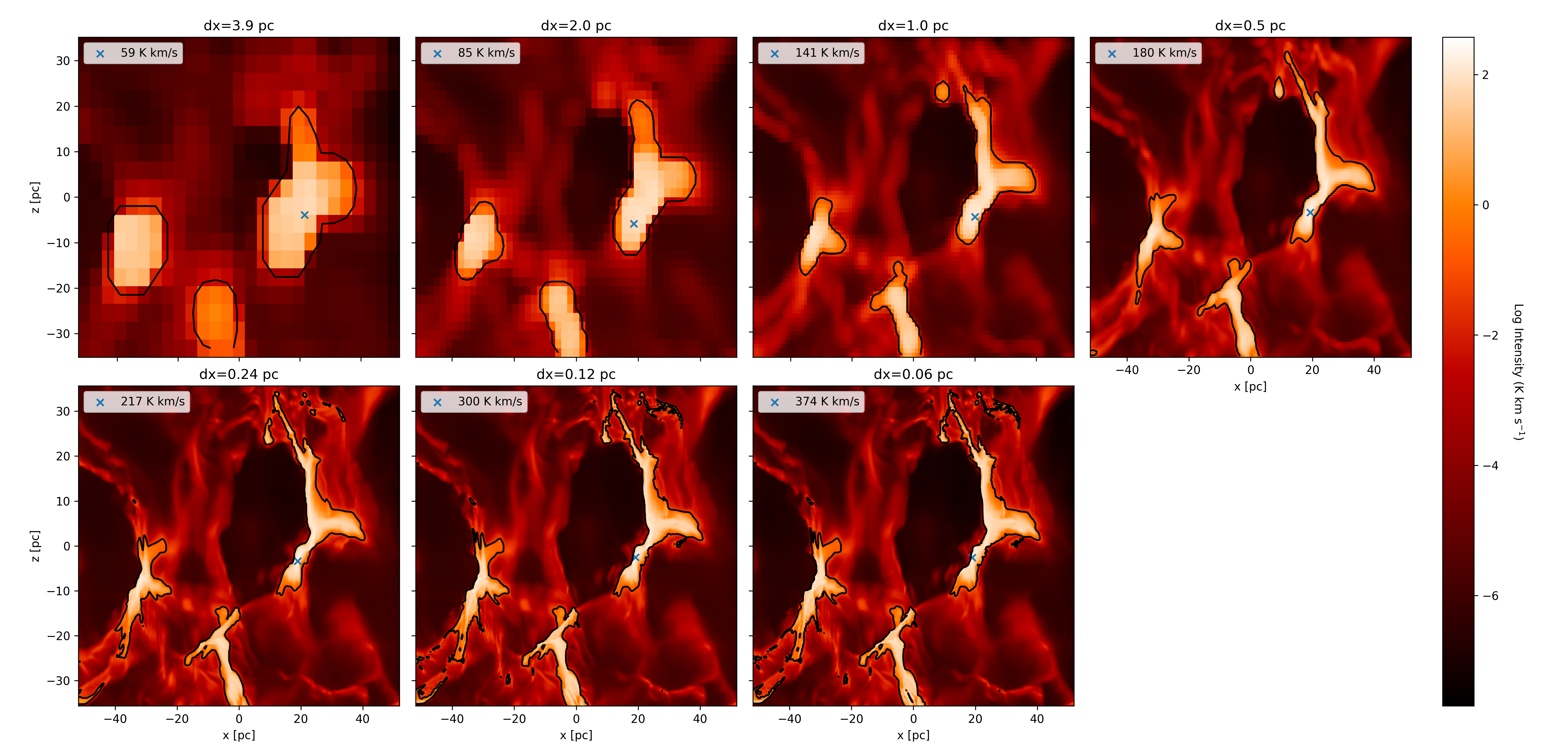Synthetic $CO$ emission maps from the SILCC zoom-in simulations
Carbon Monoxide ($CO$) is the second most abundant molecule after molecular hydrogen ($H_2$). While $H_2$ is not observed due to a lack of dipole moment, $CO$ is easily observable using ground based telescopes, and its emission is commonly used to determine the H2 mass of molecular clouds by the $X_{CO}$ factor.
Simulations of star formation processes include on the fly chemistry, which takes into account the formation of $H_2$ and $CO$ in the course of the simulation. Recently, it was found that the used chemistry prescription needs strict resolution criteria for convergence (Joshi et al. 2019).
The way how to compare simulations to actual observations is to perform synthetic observations. We investigate the convergence criteria of resolution for synthetic observations of $CO$ emission. The task is addressed by radiative transfer code RADMC-3D.
The synthetic observations are performed on molecular clouds, which self-consistently condense out of the diffuse medium in the SILCC zoom-in simulations computed by Seifried et al. (2017). The smallest grid cell size varies from 3.9 to 0.06 pc.
The figure shows the synthetic emission maps in one line of sight for different resolution levels, as indicated above each subplot. The black contour indicates the observable area, where the emission is above 0.1 K km/s. With increasing resolution, the structure of the molecular cloud becomes more defined, and also the $CO$ emission and the $X_{CO}$ factor both increase with increasing resolution. We find, that convergence has not yet been achieved at 0.06 pc.
